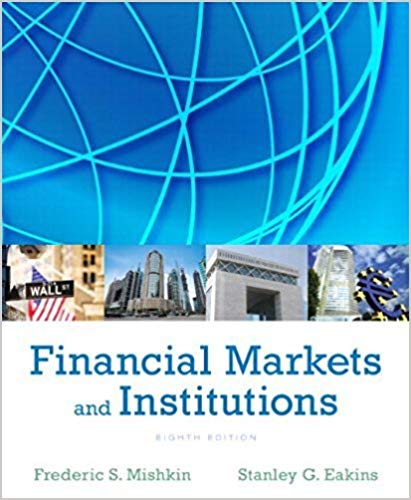Answered step by step
Verified Expert Solution
Question
1 Approved Answer
QUESTION 1 There is a strong similarity between bonds and stocks because of the nature of the cash flows. Both bonds and stocks offer assurance
QUESTION 1
- There is a strong similarity between bonds and stocks because of the nature of the cash flows. Both bonds and stocks offer assurance of regular payments through either dividend or interest, the final sale of stock is similar to the final return of a bond's principal.
- True
- False
5 points
QUESTION 2- One reason that investors may assign a different value to a stock is due to differences in the appropriate discount rate to use in solving for present values.
- True
- False
5 points
QUESTION 3- Because stocks rely on dividends as the principal source of cash flow, ascertaining stock prices is an easier and more precise process than the valuation of bonds, which relies on variable coupon payments.
- True
- False
5 points
QUESTION 4- An investor will typically enter into an investment only when he or she has established a minimum required return that will either be met or exceeded by the expected return.
- True
- False
5 points
QUESTION 5- Stock pricing models do not give precise results due to the uncertainty of future cash flows.
- True
- False
5 points
QUESTION 6- A stock's total return is realized from two principal sources, its dividend yield and any gain from the increase in its selling price over the original purchase price of the stock.
- True
- False
5 points
QUESTION 7- Standard deviation is an important concept in portfolio theory because:
- it is a measure of risk for a stock when it is held on a stand-alone basis.
- it is a measure of risk for a stock when it is held in a diversified portfolio.
- it is a measure of the variability of a stock's return.
- both a. and c. are correct.
- all of the above are correct.
5 points
QUESTION 8- The considerations associated with stock valuation do not include:
- the expected future dividend performance of the stockthe estimated selling time and price of the stock
- the exchange on which the stock is traded
- the market return on stocks of that type
5 points
QUESTION 9- Determining the market price of a financial asset depends principally on identifying the future cash flows associated with its ownership.
- True
- False
5 points
QUESTION 10- A security's value is equal to the present value of its expected future cash flows discounted by an appropriate rate of return.
- True
- False
5 points
QUESTION 11- Risk in finance is defined as the variability of return.
- True
- False
5 points
QUESTION 12- The principle of risk aversion can best be described as:
- the observation that investors are unwilling to acquire very risky securities regardless of their risk premiums
- the hypothesis that people always prefer investments with less risk to those with more risk if the expected returns are equal
- the observation that risky securities usually offer unattractive expected returns when the possibility of loss is considered
- all of the above
5 points
QUESTION 13- Which of the following statements is/are correct regarding the intrinsic value of a stock?
- The intrinsic value of a stock is the same for every well-informed investor.
- The intrinsic value of a stock is based on forecasted cash flows.The intrinsic value of a stock will change based on how long a stock is expected to be held by the investor.
- a. and b. above are correct.
- b. and c. above are correct.
5 points
QUESTION 14- Stocks that have high financial rewards are generally accompanied by:
- high dividend payments
- low dividend payments because of internally generated growth
- high risk
- all of the above
5 points
QUESTION 15- Diversifiable risk is:
- measured by beta
- company-specific
- unsystematic risk
- Both b & c
5 points
QUESTION 16- The longer the time to maturity, the smaller the maturity risk associated with a bond.
- True
- False
5 points
QUESTION 17- Coupon rates and payments are generally fixed throughout the life of a bond regardless of the economic or market conditions.
- True
- False
5 points
QUESTION 18- Common stockholders have a ____ on both income and assets of the firm.
- preemptive right
- residual claim
- cumulative claim
- proxy right
- none of the above.
5 points
QUESTION 19- The larger the variance of the probability distribution of returns, the more actual returns will cluster around the mean or expected value.
- True
- False
5 points
QUESTION 20- Junk bonds pay high interest rates and are issued by even the most solid companies.
- True
- False
Step by Step Solution
There are 3 Steps involved in it
Step: 1

Get Instant Access to Expert-Tailored Solutions
See step-by-step solutions with expert insights and AI powered tools for academic success
Step: 2

Step: 3

Ace Your Homework with AI
Get the answers you need in no time with our AI-driven, step-by-step assistance
Get Started


